Oat Milk Or Coconut Milk? A Dietitian’s Real Take On Which To Choose

Walking down the milk aisle feels like a pop quiz these days, doesn’t it?
With so many plant-based options, it’s easy to feel overwhelmed.
Two of the most popular contenders you’ll see are oat milk and coconut milk, each with a dedicated fanbase.
As a Registered Dietitian Nutritionist, one of the most common questions I hear from clients is, ‘Which one is actually better for me?
‘ The truth is, the ‘best’ choice isn’t one-size-fits-all.
It depends on your health goals, dietary needs, and even how you plan to use it.
In this guide, we’ll break down everything you need to know—from nutrition science to kitchen performance—to help you decide which carton to put in your cart.
- How Is Oat Milk Actually Made?
- So What’s The Story With Coconut Milk?
- A Dietitian’s Nutritional Breakdown
- Will Oat Milk Spike My Blood Sugar?
- Is The Saturated Fat In Coconut Milk A Problem?
- What About Allergies and Intolerances?
- Which One Is Better For The Planet?
- Who Wins in the Kitchen?
- How to Pick a Good One at the Store
- Conclusion
How Is Oat Milk Actually Made?
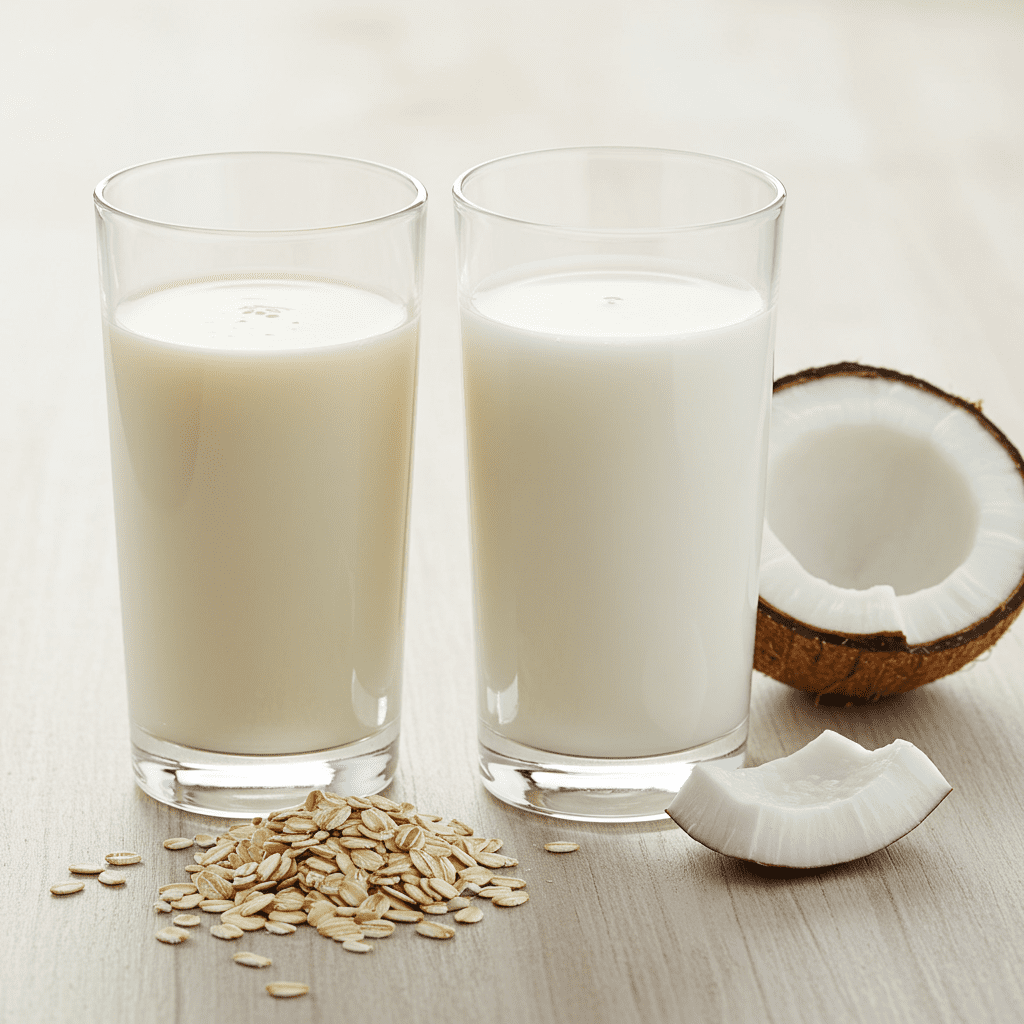
At its core, oat milk is a simple blend of rolled oats and water.
However, the commercial process that creates its signature creamy texture and subtle sweetness is a bit more scientific.
Manufacturers add specific enzymes to the oat slurry to break down the complex starches into smaller, simpler sugars, primarily maltose.
This enzymatic process is why oat milk tastes naturally sweeter than you’d expect, even without added sugar.
This process also helps create a smooth, thick consistency that mimics dairy milk surprisingly well.
Afterward, the mixture is strained to remove the thicker, pulpy parts of the oat, leaving behind the liquid we know as oat milk.
Most brands then fortify it with vitamins and minerals like calcium, vitamin D, and vitamin B12 to boost its nutritional value.
So What’s The Story With Coconut Milk?
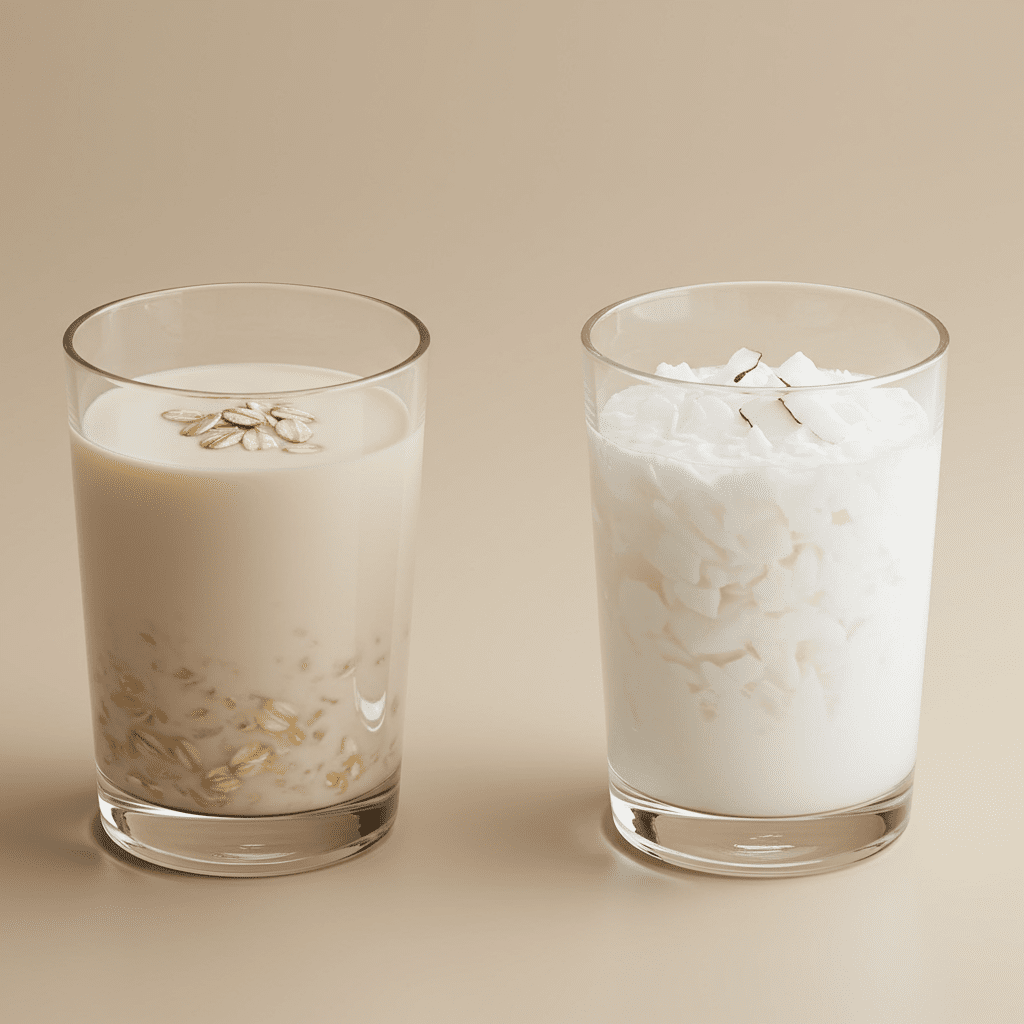
The coconut milk you find in a carton next to the oat milk is quite different from the thick, high-fat version sold in a can.
Beverage-style coconut milk is made by grating the white flesh of a mature brown coconut, simmering it in hot water, and then pressing the mixture to extract a milky liquid.
To achieve a consistency similar to dairy milk, this rich extract is then diluted with more water.
Because the initial extract is very high in fat, this dilution significantly lowers the calorie and fat content to make it more drinkable.
Like oat milk, most brands are fortified with vitamins and minerals to make them a more comparable alternative to dairy.
It’s important to distinguish this from canned coconut milk, which is much thicker and is intended for cooking, and coconut water, which is the clear liquid found inside a young green coconut.
A Dietitian’s Nutritional Breakdown

When we put these two milks head-to-head, their nutritional profiles reveal some key differences.
It’s important to remember that nutritional values can vary significantly between brands, so always check the label.
For this comparison, let’s look at one-cup (240ml) servings of typical unsweetened versions.
Oat milk is generally higher in calories, carbohydrates, and protein.
Its main claim to fame is its fiber content, specifically a soluble fiber called beta-glucan.
Coconut milk, on the other hand, is typically lower in calories and carbohydrates but higher in fat, particularly saturated fat.
It contains virtually no protein or fiber.
Fortification is key for both.
As a dietitian, I recommend choosing a brand fortified with calcium and vitamin D, as these are crucial nutrients for bone health that you’d otherwise get from dairy milk.
Will Oat Milk Spike My Blood Sugar?

This is a valid and common concern.
Because the starches in oats are broken down into sugars during processing, oat milk has more sugar and carbohydrates than many other plant milks, which can impact blood sugar.
However, the soluble beta-glucan fiber in oats can help slow down digestion and the absorption of sugar into the bloodstream.
A 2021 study published in the journal Foods confirmed that beta-glucans have a positive effect on glucose metabolism.
For most people, an unsweetened oat milk in reasonable amounts is unlikely to cause a dramatic blood sugar spike, especially when consumed as part of a balanced meal.
If you have diabetes or are concerned about blood sugar, I’d suggest pairing it with a source of protein or healthy fat (like in a smoothie with protein powder or almond butter) and choosing an unsweetened variety with no added sugars.
Is The Saturated Fat In Coconut Milk A Problem?

The fat in coconut milk is a hot topic.
It’s primarily saturated fat, but a large portion of it comes from medium-chain triglycerides (MCTs).
Some research suggests that MCTs are metabolized differently than the long-chain fatty acids found in animal fats, and may be less likely to be stored as fat.
However, major health organizations like the American Heart Association still recommend limiting overall saturated fat intake for optimal heart health.
As Harvard’s School of Public Health points out, while coconut oil might be better than butter, it’s not as beneficial as unsaturated plant oils.
My advice as a dietitian is one of moderation.
If you enjoy coconut milk, it can absolutely fit into a healthy diet, but it’s wise to be mindful of your total saturated fat intake from all sources throughout the day.
What About Allergies and Intolerances?
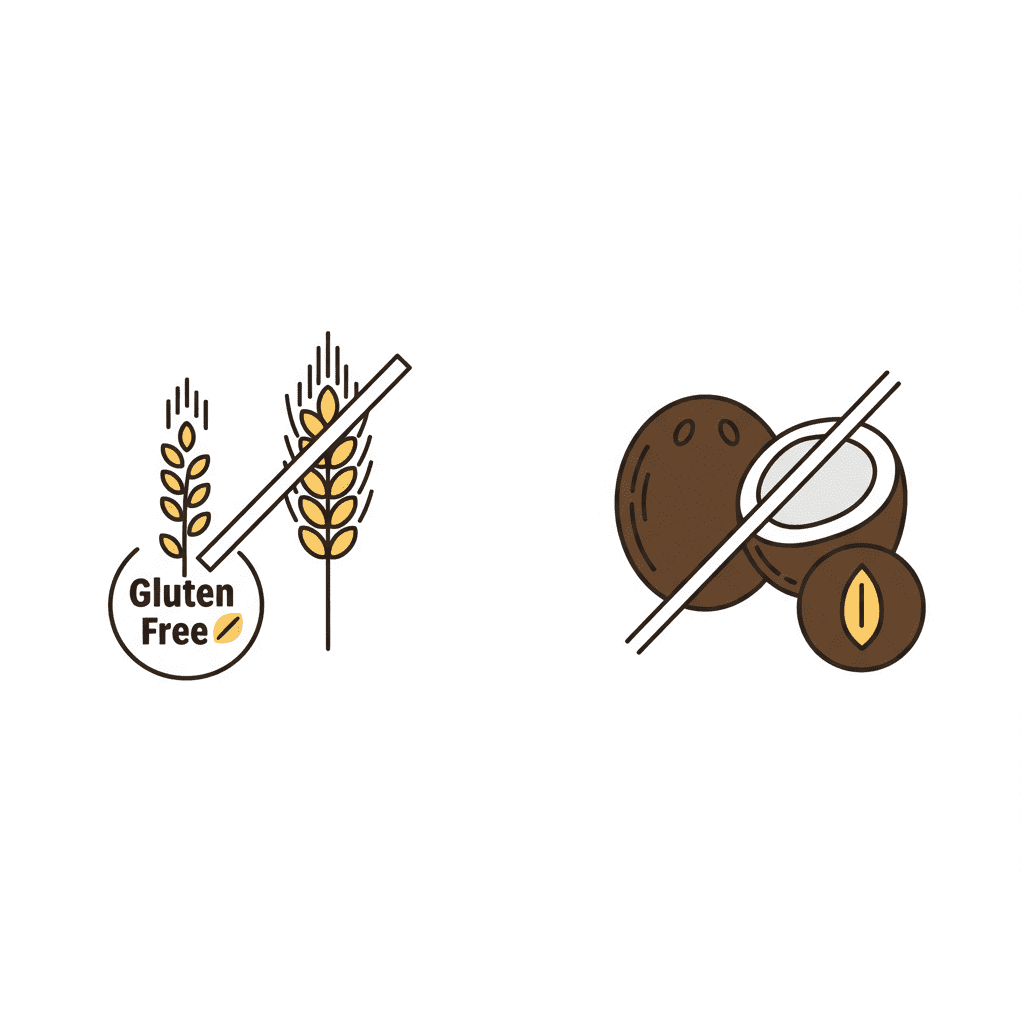
Both milks are great options for those with lactose or dairy allergies.
However, there are other considerations.
While coconuts are not botanically nuts, the FDA classifies them as tree nuts for labeling purposes due to a small number of people having allergic reactions.
According to Food Allergy Research & Education (FARE), most people with tree nut allergies can safely eat coconut, but you should always consult your allergist.
For oat milk, the main concern is gluten.
Oats are naturally gluten-free, but are often grown and processed in facilities that also handle wheat, leading to cross-contamination.
If you have celiac disease or a serious gluten sensitivity, it is crucial to choose an oat milk that is certified gluten-free.
Which One Is Better For The Planet?

The environmental impact of our food choices is increasingly important.
When comparing these two, there are trade-offs.
According to research from institutions like UCLA, oat cultivation is generally very sustainable.
Oats require significantly less water to grow than almonds and dairy cows and are often grown in cooler climates that don’t strain water resources.
Coconut cultivation, on the other hand, is restricted to tropical regions.
While it doesn’t have the same high water footprint, there are concerns about land use, monoculture farming’s impact on biodiversity, and ensuring ethical labor practices for farmers.
There’s no perfect answer, but from a water usage perspective in North America, oats often have the edge.
Who Wins in the Kitchen?
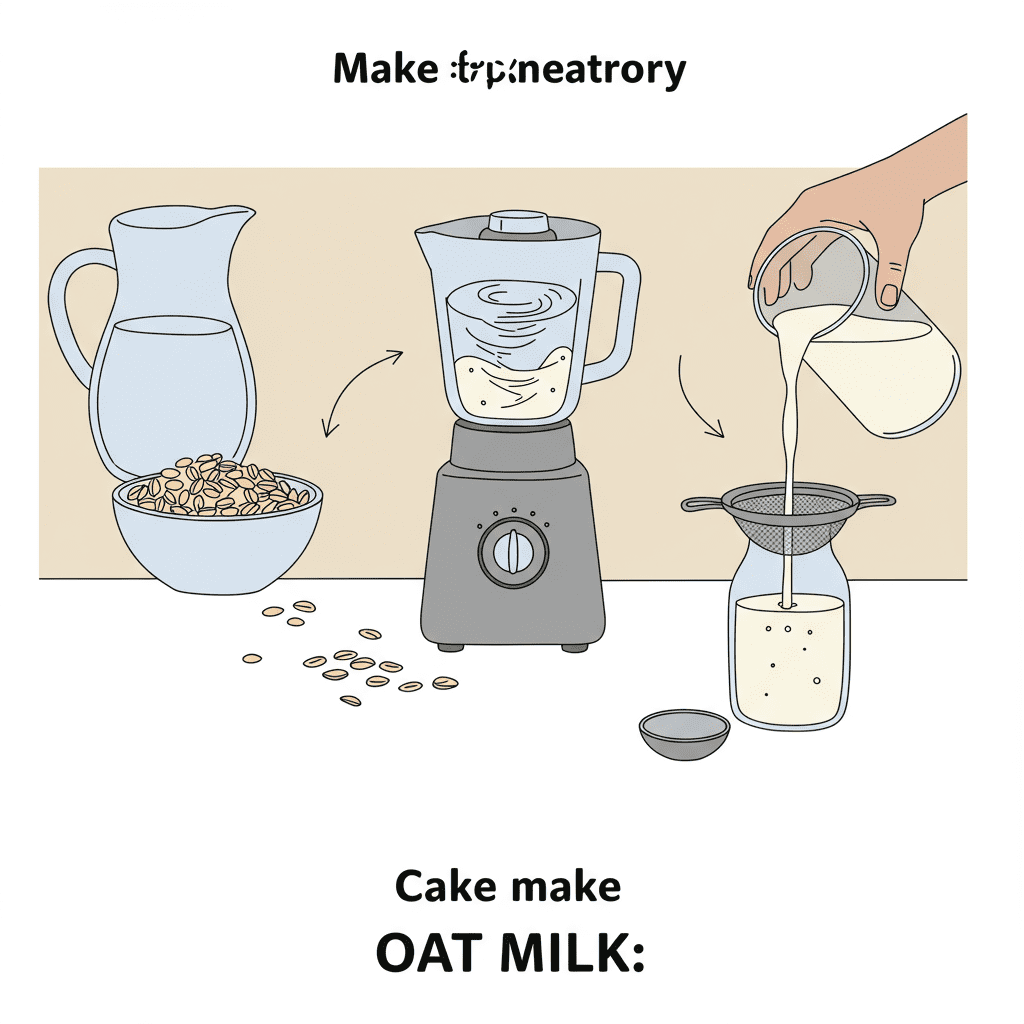
This is where the differences really shine.
For your morning coffee, oat milk is the undisputed champion.
Its higher carbohydrate and protein content allows it to steam into a beautiful, stable microfoam perfect for lattes and cappuccinos.
Its creamy texture and neutral, slightly sweet flavor blend seamlessly into coffee without overpowering it.
Coconut milk, being lower in protein, doesn’t froth as well and can sometimes separate in hot drinks.
However, its rich, fatty consistency and distinct flavor make it a star in savory cooking.
It’s the backbone of many Thai and Indian curries, adds incredible creaminess to soups like this creamy honeynut squash soup, and is fantastic in rich side dishes like a healthier sweet potato casserole.
How to Pick a Good One at the Store
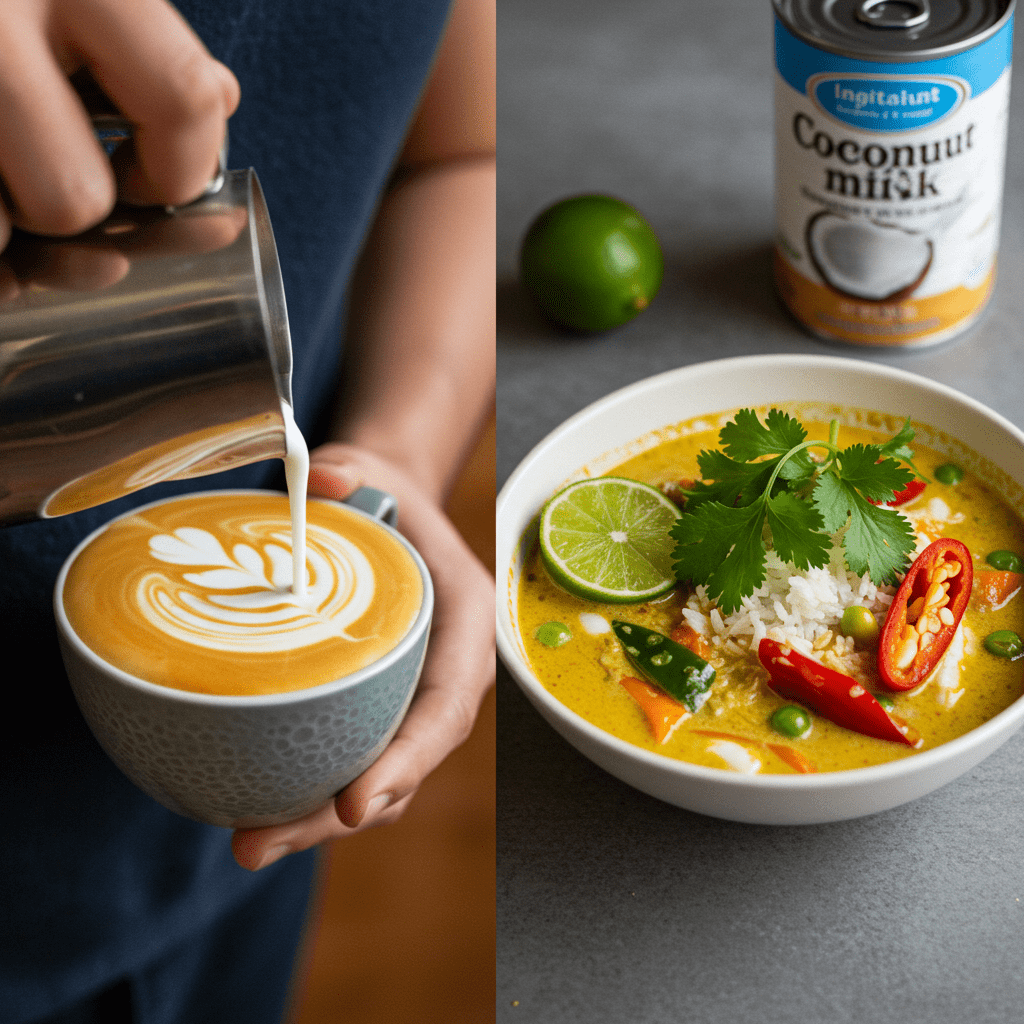
As a dietitian, I always tell people to become ingredient list detectives. Here’s your cheat sheet:
1. Look for ‘Unsweetened’: The first priority is to avoid added sugars. The natural sweetness from oat processing is plenty for most people.
2. Check for Fortification: Choose a carton that explicitly states it is fortified with Calcium and Vitamin D. Vitamin B12 is a great bonus, especially for those on a vegan diet.
3. Simpler is Better: The ideal ingredient list is short: water, oats or coconut, and the added vitamins/minerals.
4. A Note on Gums and Oils: Many brands add gums (like gellan gum) as stabilizers and oils (like sunflower or canola oil) to improve texture and richness. While generally recognized as safe, some people prefer to avoid these for a more whole-foods approach. This is a personal preference, not a strict health rule.
Conclusion
So, who is the winner in the oat milk versus coconut milk showdown?
The real winner is you, because you have excellent choices that suit different needs.
Choose oat milk if: You prioritize a creamy texture for your coffee, want a bit more fiber and protein, and are looking for a more neutral flavor for cereals and baking.
Choose coconut milk if: You follow a lower-carb diet, need a lower-calorie option, or want a rich, flavorful base for delicious curries and soups.
Ultimately, both can be part of a healthy, balanced diet.
My professional advice is to choose an unsweetened, fortified version of whichever one you enjoy most.
Listen to your body, consider your personal health goals, and don’t be afraid to keep both in your fridge for different occasions.

[…] milk you choose has a big impact on the final texture and taste. If you’re aiming for that signature […]
[…] you want a shake that tastes more like real milk, Fairlife […]